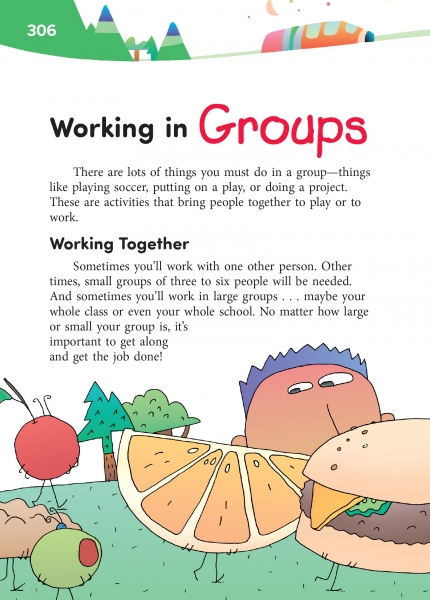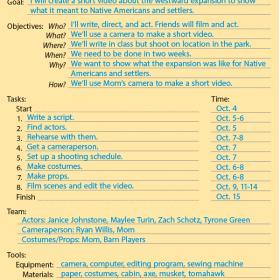Page 306 from

Start-Up Activity
Help students understand that many of the great things around them came into being because of people working together. Point to the clock on the wall and ask a series of questions about it:
-
How did that clock get there? (Somebody put it there. Maybe a builder.)
-
Where did the builder get the clock? (Probably bought it from a store.)
-
Where did the store get the clock? (Probably bought it from a clock factory.)
-
Where did the clock factory get the clock? (They made it out of parts.)
-
Where did the clock factory get the parts? (They made them out of metal and plastic.)
-
Where did they get the metal and plastic? (People mined the metal out of the ground and made the plastic out of oil.)
Point out that something as commonplace (and important) as a clock comes about only through the combined work of many, many people. Working in groups is what makes the world work.
Tell students that they need to be able to work in groups to accomplish great things.
Think About It
“Find a group of people who challenge and inspire you, spend a lot of time with them, and it will change your life.”
—Amy Poehler

Start-Up Activity
Help students understand that many of the great things around them came into being because of people working together. Point to the clock on the wall and ask a series of questions about it:
-
How did that clock get there? (Somebody put it there. Maybe a builder.)
-
Where did the builder get the clock? (Probably bought it from a store.)
-
Where did the store get the clock? (Probably bought it from a clock factory.)
-
Where did the clock factory get the clock? (They made it out of parts.)
-
Where did the clock factory get the parts? (They made them out of metal and plastic.)
-
Where did they get the metal and plastic? (People mined the metal out of the ground and made the plastic out of oil.)
Point out that something as commonplace (and important) as a clock comes about only through the combined work of many, many people. Working in groups is what makes the world work.
Tell students that they need to be able to work in groups to accomplish great things.
Think About It
“Find a group of people who challenge and inspire you, spend a lot of time with them, and it will change your life.”
—Amy Poehler

